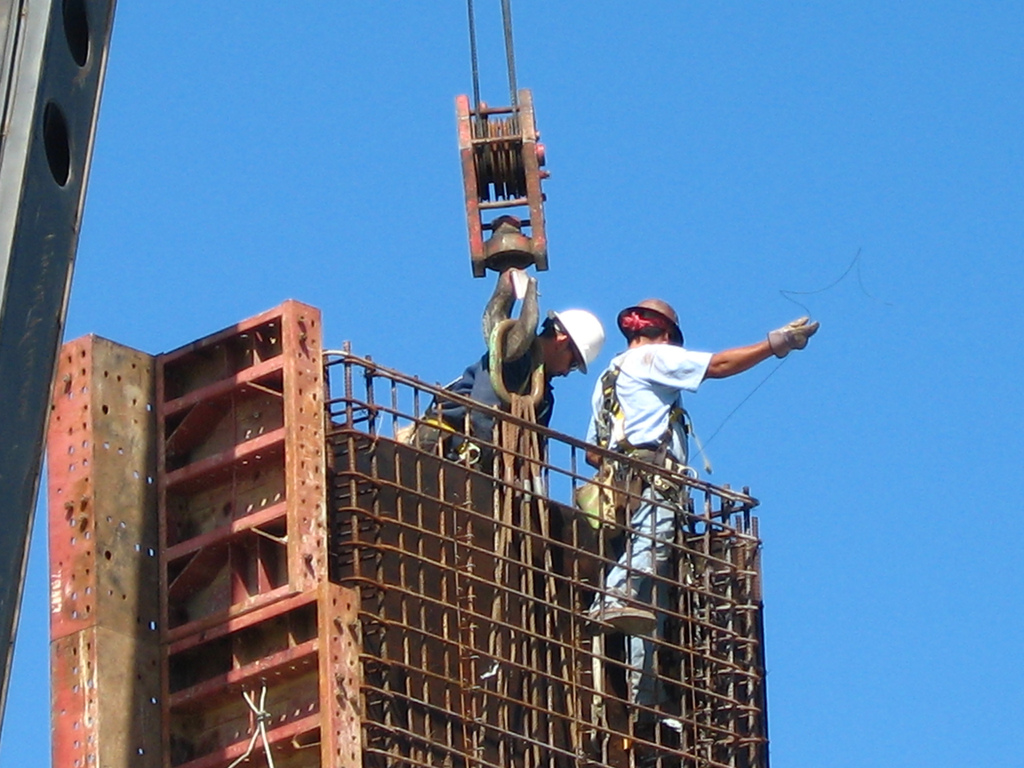Both real gross domestic product (GDP) and nonresidential fixed investment expanded during the third quarter, according to an analysis by Associated Builders and Contractors (ABC) of a release from the Bureau of Economic Analysis. GDP expanded 1.5% (seasonally adjusted annual rate) during the third quarter while nonresidential fixed investment expanded by 2.1% during that period, both building on positive results from the previous quarter.
The bureau estimated that GDP expanded 3.9% during the year's second quarter, while nonresidential fixed investment was revised upward to a 4.1% increase from an initial estimate of a 0.6% decrease. This marks the second consecutive release in which the previous quarter's nonresidential fixed investment figure was amended from negative to positive. Investment in nonresidential structures fell by 4% after growing by 6.2% in the second quarter.
"The U.S. economy is not quite as bad as the headline GDP number suggests," said ABC Chief Economist Anirban Basu in a statement. "Private final demand, an indicator that represents sales to nongovernmental domestic purchasers, expanded by 3.2% in the third quarter. Many economists consider this the most telling and persistent aspect of GDP, suggesting that the economy is healthier than some might suspect.
"The current quarter was heavily impacted by a foreseeable inventory adjustment, a stronger dollar and a weakening global economy," Basu said. "The fact that the recovery remains in place is reflected in fixed investment data, including the categories that relate most directly to nonresidential construction. While it is true that investment in structures slipped 4%, this largely appears to be a statistical give-back from the second quarter's better than 6% performance. Other data indicates ongoing momentum in nonresidential construction, which should be more apparent during ensuing GDP releases.
"The recovery will continue to be led by consumers," Basu said. "Interest rates will also feature prominently in terms of determining the extent to which the recovery will be sustained in 2016 and beyond. For now, ultra-low interest rates are inducing people to invest in order to generate financial yields. This has been a bonus for nonresidential construction, but potentially may be triggering over investment in certain construction segments."

Performance of key segments during the third quarter:
- Personal consumption expenditures added 2.19% to GDP after contributing 2.42% in the second quarter.
- Spending on goods grew 4.5% from the second quarter.
- Real final sales of domestically produced output increased 2.9% for the third quarter after a 3.7% increase in the second quarter.
- Federal government spending increased 0.2% in the third quarter after remaining unchanged in the second quarter.
- Nondefense spending increased 2.8% after decreasing by 0.5% in the previous quarter.
- National defense spending fell 1.4% after inching 0.3% higher in the second quarter.
- National defense spending fell 1.5% after growing 1% in the first quarter.
- State and local government spending expanded 2.6% during the third quarter after an increase of 4.3% in the second.
To view the previous GDP report, click here.
Related Stories
| Nov 2, 2010
Cypress Siding Helps Nature Center Look its Part
The Trinity River Audubon Center, which sits within a 6,000-acre forest just outside Dallas, utilizes sustainable materials that help the $12.5 million nature center fit its wooded setting and put it on a path to earning LEED Gold.
| Nov 2, 2010
A Look Back at the Navy’s First LEED Gold
Building Design+Construction takes a retrospective tour of a pace-setting LEED project.
| Nov 2, 2010
Wind Power, Windy City-style
Building-integrated wind turbines lend a futuristic look to a parking structure in Chicago’s trendy River North neighborhood. Only time will tell how much power the wind devices will generate.
| Nov 2, 2010
Energy Analysis No Longer a Luxury
Back in the halcyon days of 2006, energy analysis of building design and performance was a luxury. Sure, many forward-thinking AEC firms ran their designs through services such as Autodesk’s Green Building Studio and IES’s Virtual Environment, and some facility managers used Honeywell’s Energy Manager and other monitoring software. Today, however, knowing exactly how much energy your building will produce and use is survival of the fittest as energy costs and green design requirements demand precision.
| Nov 2, 2010
Yudelson: ‘If It Doesn’t Perform, It Can’t Be Green’
Jerry Yudelson, prolific author and veteran green building expert, challenges Building Teams to think big when it comes to controlling energy use and reducing carbon emissions in buildings.
| Nov 2, 2010
Historic changes to commercial building energy codes drive energy efficiency, emissions reductions
Revisions to the commercial section of the 2012 International Energy Conservation Code (IECC) represent the largest single-step efficiency increase in the history of the national, model energy. The changes mean that new and renovated buildings constructed in jurisdictions that follow the 2012 IECC will use 30% less energy than those built to current standards.
| Nov 1, 2010
Sustainable, mixed-income housing to revitalize community
The $41 million Arlington Grove mixed-use development in St. Louis is viewed as a major step in revitalizing the community. Developed by McCormack Baron Salazar with KAI Design & Build (architect, MEP, GC), the project will add 112 new and renovated mixed-income rental units (market rate, low-income, and public housing) totaling 162,000 sf, plus 5,000 sf of commercial/retail space.
| Nov 1, 2010
John Pearce: First thing I tell designers: Do your homework!
John Pearce, FAIA, University Architect at Duke University, Durham, N.C., tells BD+C’s Robert Cassidy about the school’s construction plans and sustainability efforts, how to land work at Duke, and why he’s proceeding with caution when it comes to BIM.
| Nov 1, 2010
Vancouver’s former Olympic Village shoots for Gold
The first tenants of the Millennium Water development in Vancouver, B.C., were Olympic athletes competing in the 2010 Winter Games. Now the former Olympic Village, located on a 17-acre brownfield site, is being transformed into a residential neighborhood targeting LEED ND Gold. The buildings are expected to consume 30-70% less energy than comparable structures.















